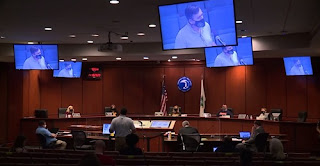Understanding
I have found, that the greatest obstacle to overcome in a Technical environment is not always the technology. More often than not, it is people.
This is not to say that people themselves are to blame. Most of the time, I find that the people I work with, especially the ones who often get flagged as “problematic” have the best interests of the business and their own staff at heart. In fact, it is their passion for their work that leads them to be proactive stakeholders and “passionate advocates for their environment.” This passion can be a powerful tool, but it can also create powerful conflict when the goals of the stakeholders conflict. This often leads to arguments and even accusations of sabotage. Such accusations are patently unfair, because, in almost every case, everyone involved wants the same thing. Success for their team.
So how does this happen? How do these conflicts arise?
In almost every case, it is from a failure in the old “3 C’s of teamwork” Communication, Collaboration and Coordination. Now there are more than enough management articles out there on “the 3 C’s” so I think I will distill that down to a single term.
“Understanding”
I cannot count the number of times I have been asked to wade into a conflict between technical teams only to find that the entire conflict is an artifact of a lack of understanding.
Imagine that you have an application team and a hardware team. The application team is trying to acquire an environment for their new application. They submit a ticket. The hardware team has a process by which the ticket should be accompanied by a detailed form that they use to “size” the environment for the application. This form is never completed because the application team is unaware of it. The hardware team pushes back, the application team escalates. Before you know it, you have 2 teams, both trying to do their job right, butting heads and raising the alarm to leadership!
Looking at this example from the outside, you can easily see that the error is as simple as a single missed form. However, from INSIDE the conflict, you would be surprised at how often observations like that can be missed. The 2 teams did not understand each other’s needs and therefore, were not ready to work together.
Operational Readiness is much more than a single equipment checklist to run before you implement a project or change. Operational Readiness means everyone involved understands what you are doing and why. It means that teams are talking TO each other and not AT each other.
In the example, it is easy to say “The application team should have filled out the form” or “Hardware should have just done the needful” but the real answer is, the hardware and application teams should have taken a moment to discuss and understand what each teams needs and goals were. If that had taken place, the information needed could have been exchanged collaboratively and conflict avoided.
In a continued quest for Readiness, once this conflict was dealt with, additional steps would be taken to avoid this in the future. The Hardware team could make submission of the requirement form a required step so that no ticket could be submitted without it. This would be a “technical check” against error. They could also change their process so that a collaborative meeting takes place on every future request. I would call this a “behavioral check.”
The point of all this being that gaps in our processes cannot be dealt with as one-off events. We should always be looking at them to find ways to improve our process so they do not fail again. We should also be ready and willing to deal with gaps from a personal and behavioral standpoint and not always reach for the technical solution.
From a project perspective, it is important that we address the understanding of everyone involved. When we clearly define what our end goals are from a functional and technical perspective, we give everyone involved an opportunity to participate and contribute to our planning. This collaboration leads to a much better level of understanding. Even if not everyone is getting what they want, they now know the reason why.
Knowing the shape of things to come will give everyone a better sense of control and can be invaluable to avoiding conflicts. Uncertainty breeds rumors, which erodes morale and can cause people to make poor decisions based on incorrect assumptions. By clearly communicating throughout a project, we can avoid this.
In conclusion, the human factor is large component of Operational Readiness and it is through fostering understanding among the teams involved that we avoid conflicting silos and make sure we can push forward.




Comments
Post a Comment